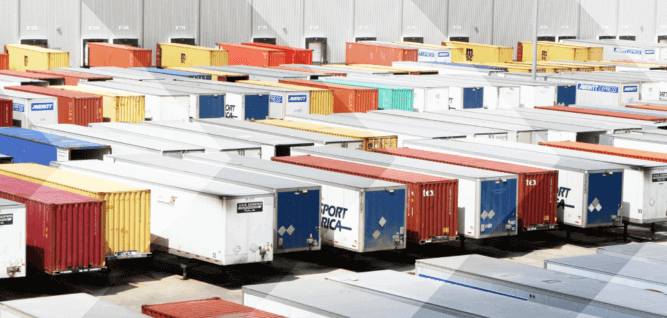What Carriers Should Know About Load-to-Truck Ratios

Make data-driven decisions.
Grow your business with competitive pricing and negotiating.
The load-to-truck ratio, also known as the truck-to-load ratio, is an important metric that can help you determine the profitability of different routes and negotiate the highest rates. But exactly what does load-to-truck ratio mean, how can you calculate it, and what are the best ways to use it?
In this post, we’ll cover everything carriers need to know about load-to-truck ratios, including factors that impact load-to-truck ratios and how truck drivers can find the best rates.
What are load-to-truck ratios?
The load-to-truck ratio is a simple math equation. To calculate it, divide the number of loads posted on a load board by the number of truck posts. In general, an ideal load-to-truck ratio is 2:1 (two loads for every truck). Reverse those numbers — 1:2 — and you’re looking at a process that’s less than efficient (one load distributed across two trucks).
There are many factors that can affect load-to-truck ratios such as:
Load type and truckload capacity
A reefer trailer transporting multiple containers from different shippers could have a load-to-truck ratio of 10:1, whereas a flatbed hauling a lumber shipment might have a load-to-truck ratio of 1:1.
Seasonal demand and location
During peak demand for specific products, the trucking industry may experience big swings in ratios. If there are more loads than available trucks, that means shipping prices likely will increase. Demand may change uniformly (like around the holidays), or it may be specific to an area (like the south during produce harvest time).
The load-to-truck ratio could be high in one direction, such as going into a specific city, but much lower coming back out. In that case, you’ll want to negotiate inbound rates that are high enough to cover your costs.
Supply chain issues
Freight availability can have an impact on load ratios. For example, if a ship is late to arrive with products, carriers may need to spread loads across several trucks, delivering them as they become available. (Or trucking companies may partner with a less-than-truckload freight broker to achieve more favorable ratios).

What does a high load-to-truck ratio mean?
A high load-to-truck ratio means that there are a lot of loads that need to be picked up. The higher the load-to-truck ratio, the more leverage truck drivers typically have. Brokers may actually compete against each other to find trucks, and drivers may be able to use load boards to negotiate better rates.
In general, flatbeds will see the highest load-to-truck ratios, then reefers, and then dry vans. This is due to the relative number of each type of truck on the road. Fewer trucks of a particular type mean higher load-to-truck ratios, since there are less trucks to haul the loads.
When considering load-to-truck ratios, it’s important for carriers to look at trends, load boards, and real-time data. This will help in planning the next few routes efficiently rather than risking one high-paying load followed by several lower-paying trips.

Why should you check load-to-truck ratios?
Load-to-truck ratios can be extremely valuable in helping truck drivers consistently find and negotiate the highest rates. There are three main reasons to check load-to-truck ratios:
- Predict future rate changes. Watching trends in load-to-truck ratios helps you predict upcoming changes to freight rates. This can be highly useful when trying to plan your routes. For example, you might see that the load-to-truck ratio is high in your outbound direction, but dropping for the return trip. This might make the roundtrip less profitable than it first seems.
- Inform negotiation strength. When the load-to-truck ratio is high, you’re in a strong position to negotiate your rates because brokers and shippers need to get freight moving. But a lower load-to-truck ratio gives you less room to negotiate, because there are so many truck drivers available on that route.
- Plan more profitable routes. Tracking load-to-truck ratios lets you maximize the profitability of your routes. You might decide to do several back-to-back trips along routes with high load-to-truck rates. Or you might triangulate your route, driving between three cities instead of two to maximize value.
FAQ
Check truck-to-load ratios and negotiate better rates
Finding and tracking truck-to-load ratios is an important step in boosting your profitability. The Truckstop Load Board makes it easy for carriers to find loads, compare rates, and view the truck-to-load ratios for different origins and destinations. Get started today.

Find out how our platform gives you the visibility you need to get more done.
Get helpful content delivered to your inbox.
Schedule a demo.
Find out how our platform gives you the visibility you need to get more done.





